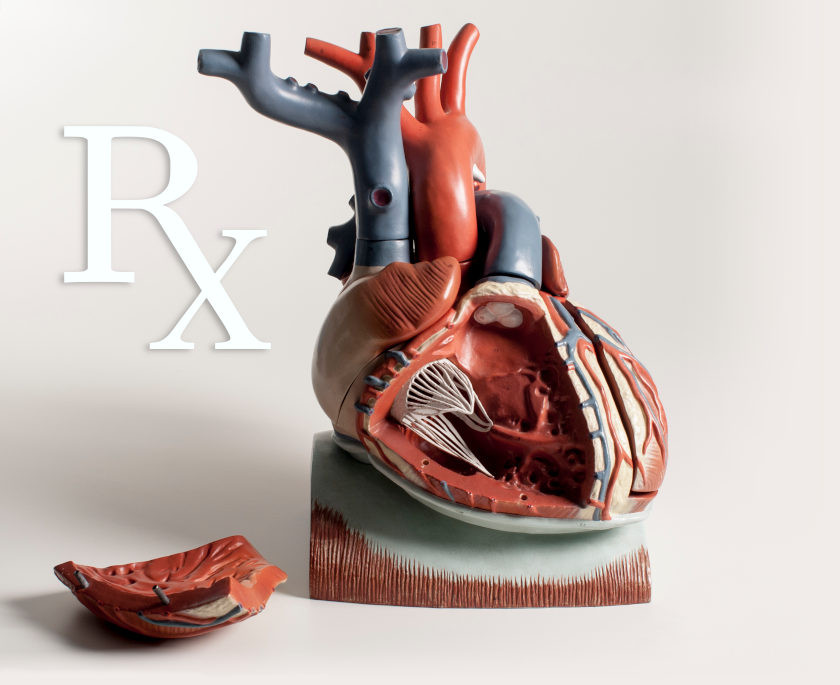Vaughan-Williams Classification of Antiarrhythmic Drugs
Antiarrhythmic drugs comprise many drug classes and have several mechanisms of action. Some classes and even some specific drugs within a class are effective with only certain types of arrhythmias. Therefore, attempts have been made to classify the different antiarrhythmic drugs by mechanism. Although different classification schemes have been proposed, the first scheme (Vaughan-Williams) is still the one that most physicians use when speaking of antiarrhythmic drugs.
The following table shows the classic Vaughan-Williams classification and the basic mechanism of action associated with each class. Note that Class I drugs are further broken down into subclasses because of subtle, yet important differences in their effects on action potentials. This table includes a Class ID drug, although it is primarily used as an antianginal drug. Clicking on the "Class" or "Basic Mechanism" will take you to the page describing the drugs that comprise that class.
| Class | Basic Mechanism | Comments |
| I | sodium-channel blockade | Reduce phase 0 slope and peak of action potential. |
| IA | - moderate | Moderate reduction in phase 0 slope; increase APD; increase ERP. |
| IB | - weak | Small reduction in phase 0 slope; reduce APD; decrease ERP. |
| IC | - strong | Pronounced reduction in phase 0 slope; no effect on APD or ERP. |
| ID | - late current | Increase APD and ERP |
| II | beta-blockade | Block sympathetic activity; reduce sinus rate and electrical conduction. |
| III | potassium-channel blockade | Delay repolarization (phase 3) and thereby increase action potential duration and effective refractory period. |
| IV | calcium-channel blockade | Block L-type calcium-channels; most effective at SA and AV nodes; reduce sinus rate and electrical conduction. |
Abbreviations: APD, action potential duration; ERP, effective refractory period; SA, sinoatrial node; AV, atrioventricular node.
The Vaughan-Williams classification has notable limitations. When initially conceived, there were few antiarrhythmic drugs, and our understanding of their mechanisms was rudimentary. Now, with many more antiarrhythmic drugs, and with a much greater yet still incomplete understanding of drug mechanisms, this classification system breaks down especially for the Class I and III drugs. Many of these drugs have mechanisms of action that are shared with drugs found in multiple classes. For example, amiodarone, a Class III antiarrhythmic, also has sodium and calcium-channel blocking actions. Many of the Class I compounds also affect potassium channels. Some of these drugs could fit in just as well as a different class than the one that they may be assigned. For this reason, various sources of information may classify some antiarrhythmic drugs differently than other sources.
The drugs that comprise the different classes differ in their efficacy (and sometimes safety) for different arrhythmias. The following table summarizes drug classes and associated arrhythmias. This table only provides broad generalizations because the listed conditions are general descriptions and do not include specific variations or co-morbidities that can determine the choice of treatment. A few antiarrhythmic agents that are not included in the Vaughan-Williams scheme are also shown in the table. It is important to note that this list not only includes FDA-approved drug indications, but also indications that are frequently used "off-label" in the United States. The information was derived primarily from UpToDate on 9/6/22.
| Condition | Drug | Comments |
| Sinus or atrial tachycardia | Class II; IV (non-DHP); ivabradine | Treat underlying cause if identified |
| Atrial fibrillation/flutter | Class IA, IC, II, III, IV (non-DHP); digoxin | Ventricular rate control is an important goal; anticoagulation is required |
| Supraventricular tachycardia | Class IA, IC, II, III, IV (non-DHP); adenosine; magnesium sulfate | |
| AV block | atropine | Acute reversal only |
| Ventricular tachycardia | Class IA, IB, II, III, IV (non-DHP) | |
| Premature ventricular complexes | Class ID, II, IV (non-DHP); magnesium sulfate | PVCs are often benign and do not require treatment |
Revised 11/30/2023

 Cardiovascular Physiology Concepts, 3rd edition textbook, Published by Wolters Kluwer (2021)
Cardiovascular Physiology Concepts, 3rd edition textbook, Published by Wolters Kluwer (2021) Normal and Abnormal Blood Pressure, published by Richard E. Klabunde (2013)
Normal and Abnormal Blood Pressure, published by Richard E. Klabunde (2013)